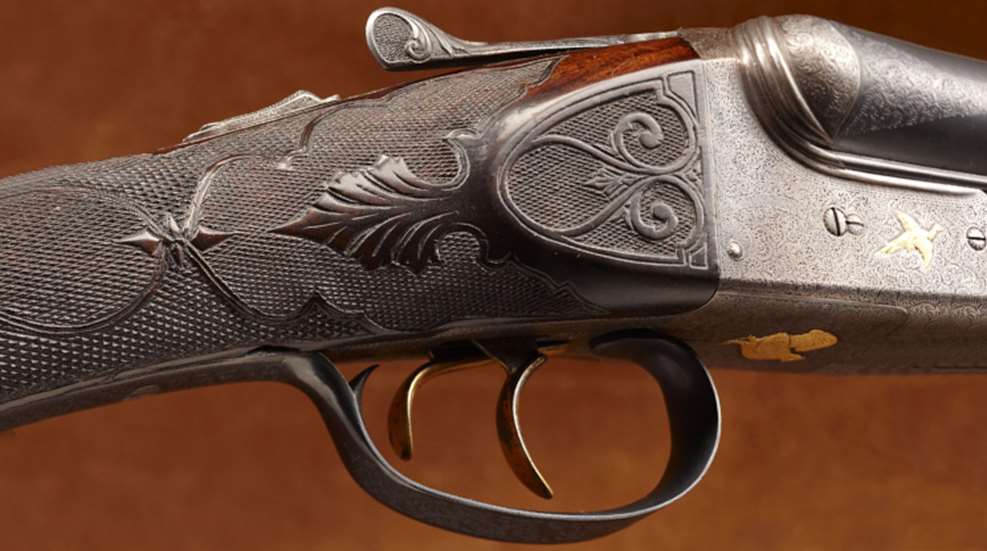
When it comes to fine American double-guns, they get no better than the Parker ”Invincibles.”
There is no clear answer to the question: “Who discovered gunpowder?” But gunmaker and author W.W. Greener, in the ninth edition (1910) of his book The Gun And Its Development, wrote, “There seems little doubt that the composition of gunpowder has been known in the East from times of dimmest antiquity. The Chinese and Hindus contemporary with Moses are thought to have known of even the most recondite properties of the compound. The Gentoo Code—which, if not as old as was first declared, was easily compiled long before the Christian era—contains the following passage: ‘The magistrate shall not make war with any deceitful machines, nor poisoned weapons, or with cannons or guns, or any kind of fire-arms, nor shall he slay in war any person born a eunuch ... .’ ”
So firearms aren’t exactly new, at least according to Greener’s research. There seems to be somewhat of a gap, and then the story is picked up some centuries later. Initially, game was shot sitting (not flying). The crude matchlock firearms of the day simply took too long to work as the match had to drop into the pan, igniting the priming charge at an undetermined time, and finally the main charge had to be set off before the shot could leave the barrel. Early paintings show aristocratically dressed individuals shooting at birds sitting on the ground over a hedge the gunners were using as a hide. In a chapter titled “The Fowling Piece and the Stalking-Horse” from The Gentleman’s Recreation published in 1671, there is a description of a fowling piece as having a barrel “five feet and a half or six feet long,” and, further, in 21st-century language, it is advised to “keep your powder dry.” As an aside, The Gentleman’s Recreation also mentions, “Enticement ... winning or wooing the fowl unto you by pipe, whistle or call,” so duck calling didn’t start in Arkansas, it was just perfected there. Even earlier, Gervase Markham mentioned shooting in Hunger’s Prevention: or the Whole Art of Fowling, and in The Merry Wives Of Windsor, written in 1597, Master Ford is said to be “a birding,” although no mention is made of what that actually means. Shooting birds on the wing had to wait for a more reliable ignition system, one that would provide a nearly instantaneous and predictable shot.

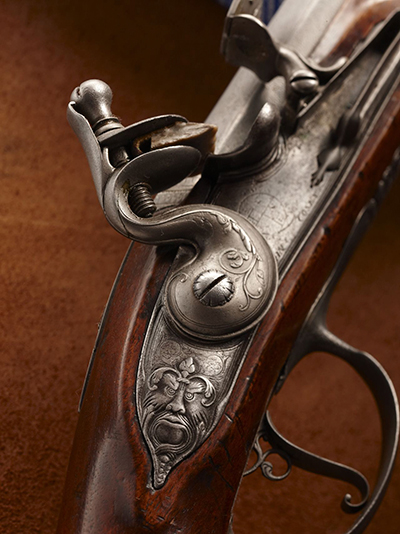
It is fact that during the early 1600s the French were shooting flying birds with early muskets. When King Charles II was in exile in France, he too shot flying birds, and when he returned to the throne and the monarchy was restored in England in 1660, he most assuredly continued wing shooting.
When the flintlock arrived in the late 1600s, shooting flying game birds became even more possible. Although this ignition system was still relatively slow, and still sensitive to moisture, it provided a relatively immediate shot, compared to the matchlock where the glowing wick nestled in the priming powder until the piece fired. It wasn’t perfect, but was still a quantum leap forward. Soon, not only were game birds and waterfowl being shot on the wing, but shooting competitions using pigeons began to proliferate. Called “Old Hats,” these flyer competitions used old top hats of the day under which a pigeon was placed and at the command “pull” a cord attached to the old hat was pulled, tipping the hat and releasing the pigeon. Thus, the flintlock, where the priming mixture is held in a pan covered with a striker called the frizzen, became a true sporting arm. The pan was connected with the main powder charge in the barrel by a small hole drilled into the breech. The hammer carried a sharpened piece of flint that, when the trigger was pulled, struck the upright part of the frizzen pushing the cover back and sending a shower of sparks into the pan. The sparks ignited the fine-ground priming powder and the fire passed through a hole into the breech and ignited the main powder charge, firing the gun. Although we consider today’s sidelocks “new,” they are simply refined, hammerless versions of the locks used on flint shotguns.
By 1770, reliable Damascus shotgun barrels were readily available, and by 1790, double-barrel flintlock shotguns were available. During that time, Joseph Manton (1766-1835), acknowledged as the “father of the modern shotgun,” was making guns. Manton brought together all of the facets of shotguns into what is the form of the modern double-barrel shotgun. Although it would have been only a matter of time until the modern shotgun took form, it was Manton who got there first. Soon, percussion ignition replaced flint, and then, rather quickly, percussion was replaced by the self-contained cartridge. When the cartridge developed, it was only a small step to breechloading. Remarkably, 1909 marks the last major development of the modern shotgun when Boss introduced the over-under.

What about the pump and semi-automatic? Christopher Spencer and Sylvester Roper developed a pump-action shotgun on which Roper was granted a patent in 1882, which led to the production of their Model 1890 pump-action shotgun. The Spencer pump was heavy, ill-balanced and clunky to operate. In 1893, Winchester introduced its John Browning-designed Model 1893 pump that was intended to shoot blackpowder. The frame was open on the top, and the action was found to lack the necessary strength to fire the new smokeless powder. Winchester quickly followed with the Model 1897, later named the Model 97, and offered to replace any 1893 with a new 1897 action if it would be returned to the factory. Both of the Winchester pumps outperformed the Spencer. But given Winchester’s status in the firearms business, and despite a lawsuit declaring patent infringement—the Roper patent was very broad, perhaps even vague—scant hearing was given Roper’s suit, and it was dismissed by the courts. In 1912, Winchester began manufacturing and warehousing its Model 1912, whose name would also be shortened to Model 12, and the modern pump-action shotgun’s form was defined.
John Moses Browning was a prolific firearm designer. From his inventive genius sprang the Winchester 1893. As he became interested in the machine gun and other arms that cycled without assistance from the operator, beyond pulling the trigger, the recoil-operated semi-automatic shotgun took form in Browning’s mind. Browning initially designed firearms for Winchester for a set fee; he designed the gun and Winchester bought the design outright. With the autoloading shotgun, Browning saw a potential good seller, and demanded not only a design fee, but an ongoing royalty on each shotgun sold. Winchester wouldn’t budge, so Browning took his design to Remington. On Jan. 8, 1902, while John Browning and his brother Matthew sat in the waiting room—his prototype shotgun across his lap and a semi-automatic rifle prototype across Matthew’s—Remington’s president, Marcellus Hartley, suffered a massive and instantly lethal heart attack. It is rumored that at the moment Hartley’s secretary George Bingham announced his death, John said to Matthew, “What do we do now?” Matthew Browning, the businessman of the pair, said, “We can accomplish nothing here. We must go to Belgium and see what we can do there.”
And so the relationship between the Brownings and Fabrique Nationale in Herstal, a suburb of Liege, Belgium, was established. The first of the Browning Automatic-5 semi-automatics that resulted hit dealers’ shelves in 1905. Although the Browning brothers struck a deal for the manufacture of their firearms with Fabrique Nationale, upon their return, they also struck a deal with Remington to produce a simpler, less expensive version of the Auto-5, this time on American shores. So was born the Remington Model 11, which stayed in production through World War II.
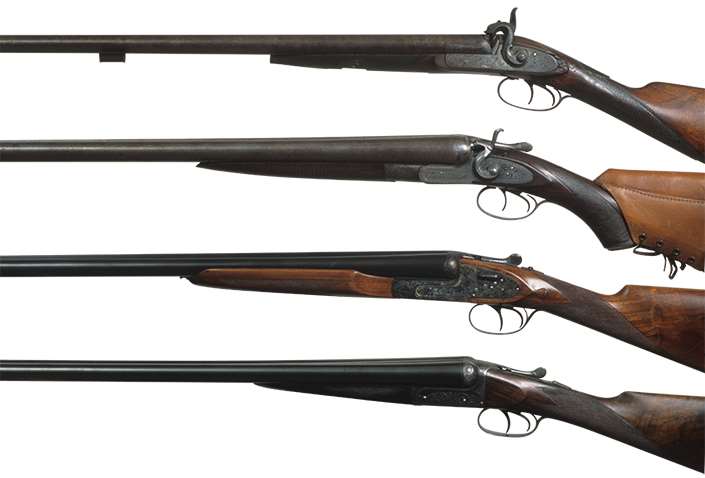
So it was that by 1909 the shotgun as we know it had established its final form. The exterior shape of the pump-action was finalized by the Winchester Model 12, semi-automatics by the Browning Auto-5, and the only refinement left was the development of the gas-operated semi-automatic, first by High Standard and then by Remington—but its shape was that of the gracefully sloping Model 12 receiver.
In the process, we’ve altogether glossed over the reason that breechloading doubles, pumps and semi-automatics work: self-contained shotshells. As firearm development gained momentum, the flint system of ignition gave way to percussion ignition. Percussion ignition was fully developed by 1820, and by the time of the American Civil War, percussion was in full use by the U.S. and Confederate armies. The battlefield is a great crucible for the development of arms, and as that conflict evolved, breechloading rifles using self-contained rimfire and center-fire ammunition came into being. Shotguns took a parallel line of development. The pinfire cartridge was developed in 1846, making possible early breechloading shotguns, and in a relatively brief 35 years, the center-fire shotshell was fully developed. By 1870, the breechloading shotgun was perfected, and during an additional short 10-year period, the hammerless double was perfected. Hammer guns lasted well into the 20th century, finally falling by the wayside during World War II. Some hammer guns are still made, primarily for live-pigeon shooters who feel they are more reliable.
Although the development of the shotgun was relatively short, and amazingly complete at a very early time in history, it is during the period from the perfection of the breech-loading shotgun in 1870 through World War I, which presents the greatest confusion. During that time in history, the Indian Wars were being fought, mostly to displace the Native Americans and to open the vast prairies to settlers. It was those settlers—and the ever-burgeoning East that was welcoming immigrants in growing numbers—who needed food. Settlers were presented with the need to feed their families as they cleared the land and while their crops grew, and cities needed a source of protein to feed their growing populations. The need for a source of inexpensive shotguns to harvest the then-abundant waterfowl and prairie game gave rise to a vast sellers’ market for shotguns. Into this market came a flood of side-by-sides along with Winchester’s pumps and Browning’s semi-automatics.
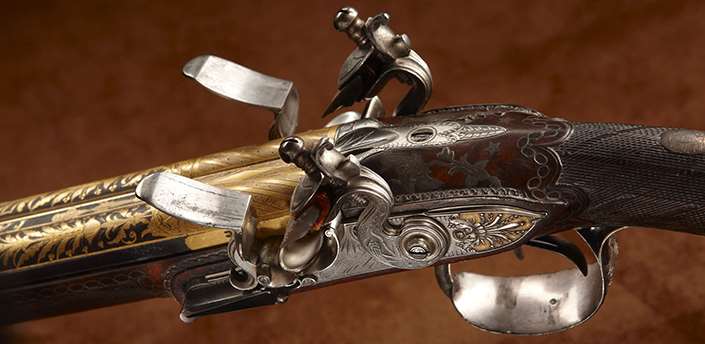
Perhaps the greatest area of confusion in separating high-grade shotguns from the chaff lies during this period. Vast numbers of double guns were produced, mainly in Belgium, but also in Britain’s major gunmaking center of Birmingham. Selling for from $10 to $20 each, these shotguns were designed and proofed for blackpowder. European gunmakers are required to submit their products to the rigors of their national proof houses, so much can be learned from simply looking at the proofmarks stamped on the barrel and action flats. If gun owners and buyers would familiarize themselves with proofmarks, they would be ever so much wiser about their shotguns.
Be that as it may, the vast majority of these shotguns were made for resale by various hardware, sporting goods and firearm retailers under trade names. It should not be a surprise that many of these trade names are very similar to those of a top-quality gunmaker. For example, the fine Parker Brothers shotgun was made in Meriden, Conn., so what does Sears, Roebuck & Co. do? Sears located a firearm factory in Meriden, and used the name Meriden Fire Arms Co.—very close to Parker Brothers original 1865 company name, The Meriden Manufacturing Co. More direct are E.D. Parker, T. Parker, Thomas Parker, W. Parker and William Parkhurst. The similarity to the original Parker company founded by Charles Parker and made famous as Parker Brothers is sufficient to confuse all but the most educated gun collector.
The problems don’t stop there. How about W. Richards? I’ve answered several letters regarding W. Richards and W.&H. Richards shotguns, both of which bear Belgian proofmarks, and are no relation at all to the vaunted British manufacturer whose name, Westley Richards, is always spelled out. Many expecting that their W. Richards was worth big bucks have been disappointed to find it is worth $200.
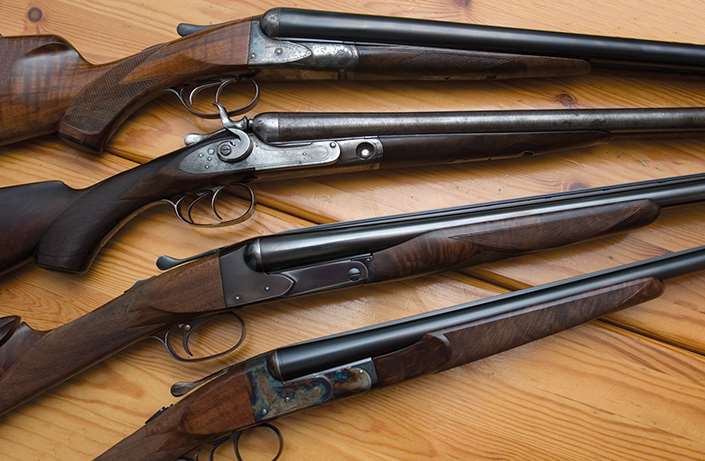
Certainly, there were many high-grade shotguns manufactured during this golden age. From 1870 through World War I, driven-bird shooting was enjoying its zenith in Great Britain. During that gilded age, many high-grade shotguns were made for the aristocracy and the well-to-do. There were many who spent their entire family fortunes pursuing and hosting these lavish shooting parties. Makers such as Purdey, Holland & Holland, Henry Atkin, Boss, Charles Lancaster, Lang, Dickson, Westley Richards—the list is both long and short—are synonymous with great guns, yet they appear on the whole, plain. Plain compared to guns with gold and/or silver inlays and elaborate decorations made for czars and sultans.
In the United States, prosperity grew following the stock market crash of 1929, and equally lavish shotguns were ordered by bankers, businessmen, physicians, attorneys and others who earned or inherited money. All American shotgun makers of that time offered high-grade shotguns in ascending levels of ornamentation. Some were for the gun cabinet, others for the field.
Recently, more and more elaborately engraved and inlaid shotguns are being commissioned. Some are great works of art, others are eccentric, often bizarre, shotguns that appeal only to their owners. Subject matter ranges from animals and game birds—often apropos to the gauge and intended quarry of the shotgun—to automobiles, scenic vistas and highly erotic subjects. I understand that an Arab potentate commissioned a shotgun featuring highly erotic engraving, then canceled the order, leaving the gunmaker holding an essentially unsellable gun. Many shotguns have appreciated in value due to their names, the engraving and highly grained wood, or the association with a historic, famous or infamous figure. Some, regardless of their quality, that are bizarre or perhaps even offensive, have little value and, at the very least, are difficult to sell—then not at a premium—unless an equally bizarre buyer can be found.
Association with companies or individuals often make the ordinary extraordinary. For example, Beretta recently repurchased Ernest Hemingway’s Beretta SO3 over-under, complete with its leather leg-of-mutton-style case with Hemingway’s address in Cuba written in ink by “Papa,” for an undisclosed price. Shotguns that are clearly associated with prominent people, and whose provenance can be clearly substantiated, take on value often far beyond their practical worth. I suppose that’s why the Boss with which Hemingway took his life was chopped into scrap. Not only must the shotgun be typical of the guns of the era when the person lived, but receipts, bills of sale, reference in family documents, wills and other documentation must also substantiate the ownership. Without real provenance, it’s just another shotgun.
One variety of shotgun keeps cropping up, of which all but a handful are frauds. Those are the shotguns used by Wells Fargo Co. guards. In any Western movie depicting a stagecoach carrying valuables, the person in the “shotgun” seat carried a double-barreled shotgun. The only substantiated shotguns made for and used by Wells Fargo, the most famous historic name in transporting valuables, were a group of about 50 made on contract by the Ithaca Gun Co. Any others are highly suspect, and most likely to be fakes.
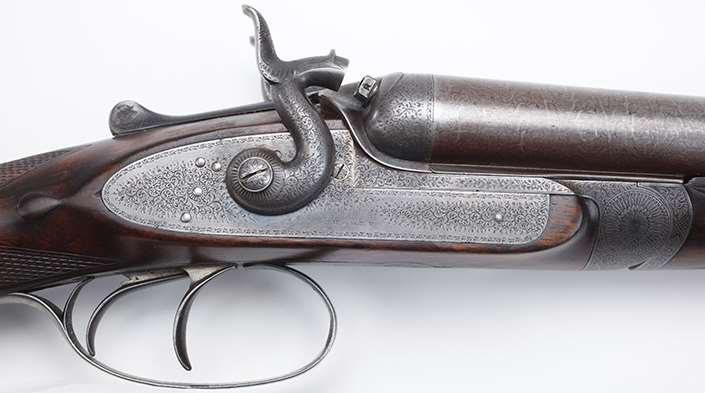
Throughout the development of the shotgun, there have been those made to a higher grade of workmanship and decoration. Of these, some are high-grade shotguns simply because of their maker, others because of the decoration applied to either top-of-the-line best guns or regular-production guns, with all manner of engraving and inlays lavished on them. The Parker A-1 Special is just such a shotgun. The common Parker action and barrels were finished with extra care, then engraved and stocked with the highest grade wood. Certainly, the value of any Parker has accelerated over the past several decades, but unique shotguns such as the A-1 Special assume extremely high values.
A genuine Joseph Manton in good condition would command a high price to a collector interested in a gun representing the first time all the facets of design were gathered into a whole that has seen little change—save for breechloading—in two centuries. Shotguns owned by the great, near-great and infamous also command a premium, regardless of quality.
Shotguns are wonderful objects. Little can match the look and feel of a fine double or the sleek Winchester Model 12, and that’s why we’re so strongly drawn to them. A fine shotgun points as if it were made for the user, and most are. Even in the role of a second hand, perhaps “previously owned” is the more politically correct term, a fine shotgun is a joy to behold and use.
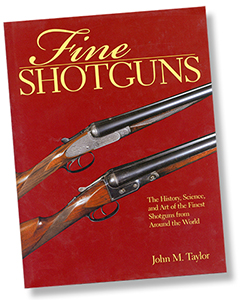 Fine Shotguns
Fine Shotguns
The History, Science and Art of the Finest Shotguns from Around the World
This informative and well-illustrated book by American Rifleman Contributing Editor John M. Taylor is about far more than just pictures of pretty guns—although quite a few lovely guns are depicted within its pages. Fine Shotguns is now out in a paperback edition, and it is from the book that this article is excerpted with permission. The author first defines what fine shotguns are, what makes them different, and then identifies them by country and maker. Although the semi-automatic Browning Auto-5 and pumps such as the Winchester Model 12 make it into the pages, this book is mostly about double guns—meaning over-unders and especially side-by-sides. Taylor then takes the reader through how such guns are actually made, step by step, by craftsmen out of steel and walnut. He even explains how one would order, say, a bespoke Purdey. He then gives advice for such seemingly mundane tasks as actually shooting, cleaning and storing fine shotguns. This is not an in-depth history of every maker that has ever made a shotgun, but it is a well-written and recommended overview on the subject of fine shotguns.
—Mark A. Keefe, IV, Editor In Chief
Fine Shotguns is 8½"x11" with 240 pps., and is available hardbound for $60 or in paperback for $35 plus shipping from Skyhorse Publishing, Inc., 307 W. 36th St., 11th Floor, New York, NY 10018; (212) 643-6816; skyhorsepublishing.com.





































